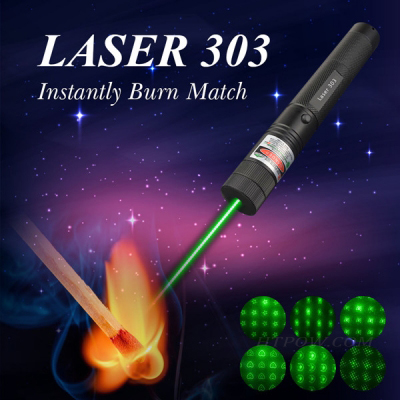Scientists have previously created red, blue, green and other visible colors of lasers, but it has proved difficult to emit red, blue, and green laser pointer at the same time because of the need to combine very different semiconductor components.
After scientists and engineers at Arizona State University created a white laser for the first time, the paper was published in a journal. The paper states, “Although past research has created red, blue, green and other wavelength lasers, usually each laser emits only one color of light. Create a laser that can emit red, green and blue at the same time. The overall device of color is very difficult, because it requires the integration of various semiconductors on a chip. However, putting these mismatched crystals one by one will cause some fatal defects.”
This sentence has clearly explained why its so-called “White Laser” is very difficult to create. In fact, this sentence also explains the basic principle of this “White Laser”. Simply put, it overcomes this difficulty by fusing several different crystals on a thin sheet, and using this thin sheet as a working substance to obtain red, green, and blue. Three colors of lasers, of course, can also obtain lasers of various wavelengths. The real difficulty is very clear. It is not how the white laser comes from, but we know how to create the white laser (using the three primary colors of red, green and blue to superimpose) and know how to achieve it (putting three working materials together as the whole The working substance of the laser), and this realization process is extremely difficult, that is to say, it is very difficult to superimpose these three working substances on a chip.
Let’s take a look at how to understand this so-called White Laser. First of all, we need to understand what a laser is and how it is produced. Laser, the abbreviation derived from (stimulated emission light amplification), laser can be understood as laser or laser. The laser is mainly composed of a working substance, a resonant cavity and a pump source, which is also a necessary condition for laser generation.
So how is the laser produced? We know that in nature, any process of luminescence must go through two stages-spontaneous emission and stimulated absorption. When atoms receive external energy, such as light energy, electrical energy, etc., electrons at low energy levels will absorb energy and jump to high energy levels. This is the stimulated absorption process. After the electrons jump to a high energy level, they can only stay for a very short time due to their high energy and instability, about the order of 10-9s before they transition to a low energy level. There are two transition processes at this time, one is spontaneous, called spontaneous radiation.
Spontaneous radiation will cause two results. One type emits heat energy and is transferred to other particles. This form does not emit light, which is called non-radiative transition; the other type emits a photon whose frequency is determined by the energy difference between the energy poles. This produces light. Ordinary light sources are basically produced by stimulated absorption and spontaneous emission. The light source continuously receives external energy, and then continuously emits photons, so the light source emits light. The other is induced by external factors, called stimulated radiation. Stimulated radiation will also radiate photons, but unlike spontaneous radiation, stimulated radiation will radiate two photons, one of which is an induced photon that meets the excitation conditions, and the other is an electron from a high energy level. A photon released by a transition to a lower energy level.
Unfortunately, these two photons are exactly the same, and the excited two photons are used as induction conditions to excite other particles that are at a higher energy level and are preparing to move to a lower energy level, so that 4 more identical photons are obtained, and then 4 8…the green laser pointer is produced. (In fact, the process of laser generation is very complicated, and there are many necessary conditions, such as the need to overcome various contradictions between stimulated absorption and stimulated emission through population inversion, etc., here is just a brief description) In simple terms, it is the pump Puyuan causes particles in the working substance to continuously stimulate radiation in the resonant cavity, thereby accumulating photons and emitting laser light.
